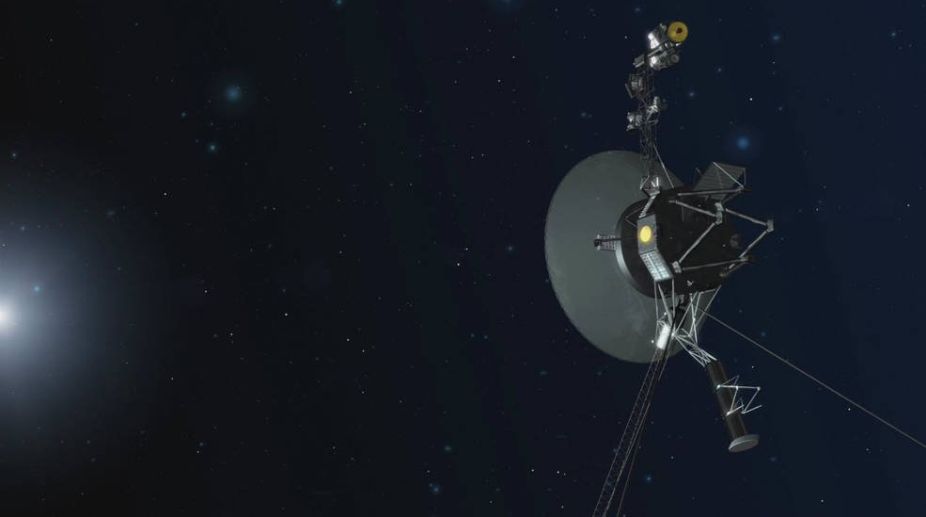Touching the Sun
The Sun, the fiery heart of our solar system, has fascinated humanity for centuries. Despite the progress of modern science, many of its secrets remain locked away, particularly the mysteries of its outer atmosphere, the corona.

Voyager 1 (Photo: Twitter)
At 13 billion miles from Earth, there’s no mechanic shop nearby to get a tune-up. But NASA enginners have successfully fired up a set of “dormant” backup thrusters aboard the Voyager 1 spacecraft – the farthest and fastest spacecraft – after 37 years.
The only human-made object in interstellar space — the environment between the stars – Voyager 1 has been flying for 40 years. It relies on small devices called thrusters to orient itself so it can communicate with Earth.
Advertisement
These thrusters fire in tiny pulses, or “puffs,” lasting mere milliseconds, to subtly rotate the spacecraft so that its antenna points at our planet.
Advertisement
Now, the Voyager team is able to use a set of four backup thrusters, dormant since 1980.
“With these thrusters that are still functional after 37 years without use, we will be able to extend the life of the Voyager 1 spacecraft by two to three years,” said Suzanne Dodd, Project Manager for Voyager at NASA’s Jet Propulsion Laboratory, Pasadena, California.
The Voyager team assembled a group of propulsion experts at NASA’s Jet Propulsion Laboratory, Pasadena, California, for the job.
Chris Jones, Robert Shotwell, Carl Guernsey and Todd Barber analysed options and predicted how the spacecraft would respond in different scenarios, NASA said.
They agreed on an unusual solution: Try giving the job of orientation to a set of thrusters that had been asleep for 37 years.
The Voyager team used a set of four backup “trajectory correction maneuver,” or TCM thrusters that are located on the back side of the spacecraft.
The engineers tested their ability to orient the spacecraft using 10-millisecond pulses, which enabled the signals from the spacecraft reach an antenna in Goldstone, California, in about 19 hours and 35 minutes on Wednesday.
“The Voyager flight team dug up decades-old data and examined the software that was coded in an outdated assembler language, to make sure we could safely test the thrusters,” said Jones, Chief Engineer at JPL.
All of Voyager’s thrusters were developed by Aerojet Rocketdyne. The same kind of thruster, called the MR-103, flew on other NASA spacecraft as well, such as Cassini and Dawn.
In the early days of the mission, Voyager 1 flew by Jupiter, Saturn, and important moons of each.
Since Voyager 1’s last planetary encounter was Saturn, the Voyager team hadn’t needed to use the TCM thrusters since November 8, 1980.
Back then, the TCM thrusters were used in a more continuous firing mode; they had never been used in the brief bursts necessary to orient the spacecraft.
The NASA team is likely do a similar test on the TCM thrusters for Voyager 2, the twin spacecraft of Voyager 1.
Voyager 1 and Voyager 2 were launched 16 days apart in 1977. Voyager 1 reached interstellar space, which NASA described as “the environment between the stars,” in 2012.
Advertisement